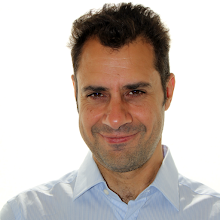Some mean wind is still breathing over me resulting in much less spare time and a bad start of the new year. However, during these holidays, I could fulfill a wish expressed on last post: I did implement the new LOD system into gdevice.
I have ported the essential Java code of the prototype and it was quite easy due to the fact that my way to code C++ in gdevice is similar to Java/C# in some key aspect. Anyway, details: there are two threads, one for receiving user input and handling the rendering process, the other one for generating terrain chunks (tiles) by means of fractional Brownian motion processes, still computing derivatives as well.. In a first test with only one single fBm made of 4 octaves, and then with a mild multifractal system, computationally equivalent to a 6 octaves fBm, but still 4 octaves.
Indeed this test is intended to evaluate the new LOD system with terrains. Plausibility of terrain itself is not crucial at this stage. Also there is no texture mapping, no shaders, no occlusion culling, not even frustum culling here.
Watch the video:
The demo ran at 25 fps on my machine, showing a runtime generated terrain made of over 500k vertices shaded with gouraud on a video card with very basic graphics capabilities. Runtime generated means that while camera proceeds a piece of the world is removed from the scene and a new generated piece is added. So you are enabled to roam ad infinitum. I definitely would not try to find periodicity in this function :)
Why chunked? Because without baking VBOs I don't feel to be getting the best from nowaday video cards. Why this chunked LOD? Because I wanted to reduce complexity to O(log(N)) still approaching dynamic geometry data without precomputing anything.
Considerations about the name: this LOD system has no name, not by me, as far as I know. It is similar to Chunked LOD and Geomipmapping, yet it is none of them.
I have ported the essential Java code of the prototype and it was quite easy due to the fact that my way to code C++ in gdevice is similar to Java/C# in some key aspect. Anyway, details: there are two threads, one for receiving user input and handling the rendering process, the other one for generating terrain chunks (tiles) by means of fractional Brownian motion processes, still computing derivatives as well.. In a first test with only one single fBm made of 4 octaves, and then with a mild multifractal system, computationally equivalent to a 6 octaves fBm, but still 4 octaves.
Indeed this test is intended to evaluate the new LOD system with terrains. Plausibility of terrain itself is not crucial at this stage. Also there is no texture mapping, no shaders, no occlusion culling, not even frustum culling here.
Watch the video:
The demo ran at 25 fps on my machine, showing a runtime generated terrain made of over 500k vertices shaded with gouraud on a video card with very basic graphics capabilities. Runtime generated means that while camera proceeds a piece of the world is removed from the scene and a new generated piece is added. So you are enabled to roam ad infinitum. I definitely would not try to find periodicity in this function :)
Why chunked? Because without baking VBOs I don't feel to be getting the best from nowaday video cards. Why this chunked LOD? Because I wanted to reduce complexity to O(log(N)) still approaching dynamic geometry data without precomputing anything.
Considerations about the name: this LOD system has no name, not by me, as far as I know. It is similar to Chunked LOD and Geomipmapping, yet it is none of them.
